- How to Propagate Monstera Guide: The Three Ways to Succeed - September 17, 2021
- Escargot Begonia: Why Is The Rex Begonia So Rare? - August 31, 2021
- Rieger Begonia: When You Can Expect The Hiemalis Begonia To Flourish - August 31, 2021
If you really want a plant feature or a talking point for your sill garden window, the Peperomia Ferreyrae a.k.a Pincushion Peperomia is sure to deliver. This unique-looking plant has many common names because it has such interesting features.
You may see it labeled as a Green Bean Peperomia, a Happy Bean Peperomia, or a Bean Plant Peperomia along with its botanical name and its common name of Pincushion Plant. This is because this plant really looks like either a pincushion or a long bean, depending on your perspective.
Just like all other Peperomia plant varieties, Pincushion Peperomia is native to the tropical regions of South and Central America and is closely related to peppers. The difference between this variety and others in its family is how it looks.
How to Identify Pincushion Peperomia
This variety of Peperomia has its own unique look. When trying to identify a Pincushion Peperomia, look for these key features:
- Leaves that are long, firm, and shaped like a green bean pod
- Flowers that are yellow and grow in clusters
- Stems that are stiff and thick
How to Grow Pincushion Peperomia from Seeds
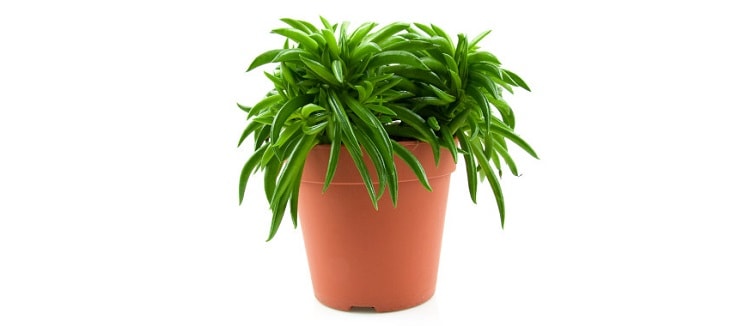
Growing Peperomia plants from seed is a slow process, but it can be done. If you are determined to grow one of these via seeds, follow these steps:
- Purchase seeds from a reputable seller (sellers who price their seeds between $1 and $2)
- Fill a container with a soilless seed starting mix
- Plant the seeds in the seed starting mix
- Water the mix so that it is moist but not soggy
- Place plastic wrap over the top of the container
- Set the container in a warm spot that gets plenty of bright, indirect sunlight
- Once sprouts appear, transplant the seeds to a container filled with soil that has a pH level between 6 to 6.5
How to Propagate Pincushion Peperomia
This plant can be propagated quickly by two different methods. These methods are preferred over planting seeds. The first method is leaf cuttings and the second method is stem cuttings. Both methods are straightforward processes that can be done during spring pruning sessions or whenever you feel that it’s time for your plant to be repotted.
The Leaf Cutting Method
- Clean a pair of scissors or another type of cutting utensil
- Cut off a healthy leaf that includes a petiole
- Fill a plant container with well-draining soil that includes 50% peat and 50% perlite
- Dip the end of the leaf in a rooting hormone
- Stick the leaf into the soil
- Cover the plant and its container with clear plastic to keep in humidity
- Set the plant container in an area that is warm and receives plenty of indirect or filtered sunlight
- Water the new plant when the top layer of its soil is dry and recover it with the plastic
- Once the plant has grown roots (approximately one month), it can be treated as a mature plant
The Stem Cutting Method
- Clean a pair of scissors or another type of cutting utensil
- Cut off a healthy 3 to 4-inch long stem that includes a petiole
- Remove the lowest leaves
- Fill a plant container with well-draining soil that includes 50% peat and 50% perlite
- Dip the end of the stem in a rooting hormone
- Stick the stem into the soil
- Cover the plant and its container with clear plastic to keep in humidity
- Set the plant container in an area that is warm and receives plenty of indirect or filtered sunlight
- Water the new plant when the top layer of its soil is dry and recover it with the plastic
- Once the plant has grown roots (approximately one month), it can be treated as a mature plant
Pincushion Peperomia Growing Conditions
You may want to consider purchasing the following pieces of equipment so that you can create a healthy environment for your tropical plant without feeling like you have moved the jungle inside your home.
These technologies will allow you to keep your plant comfy and cozy while keeping you from getting stuffy and sticky in your own home. The reason why these pieces of equipment are so helpful for the health of tropical plants is that Peperomia plants thrive in high temperatures and high humidity levels.
In their natural environment, these plants will experience temperatures ranging between 65 and 80 degrees Fahrenheit with humidity levels up to 90%, and they will thrive in this.
How to Plant Pincushion Peperomia
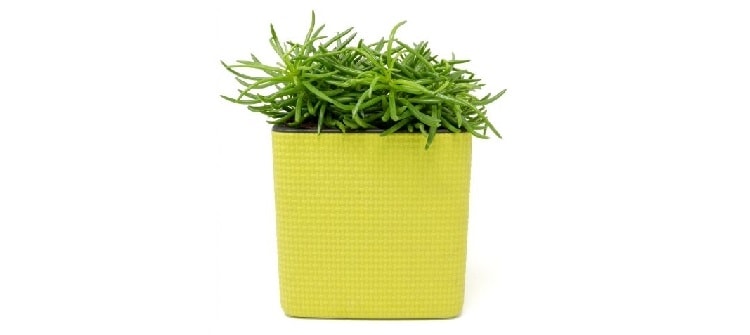
Since Pincushion Peperomia plants grow slowly and do not mind being tight and cozy in their plant container, they will only need to be repotted every two to three years. When you repot a plant, it is an opportunity to provide the plant with new soil and extra nutrients, as well as assist in keeping the plant container clean from pest infestations and diseases.
Keep an eye out for the following signs to know whether or not your plant needs repotted before two to three years has passed:
- Compacted Soil
- Roots that are crowded and growing into a ball formation
- A plant that looks too big for its current container
When it comes time to repot your Pincushion Peperomia, follow these steps:
- Fill a container with potting soil (if the plant has outgrown its current container, choose a new container that is two inches larger in diameter)
- Create a hole in the soil for the plant to set inside
- Carefully remove the plant from its current container
- Gently dust off any excess soil from its roots
- Set the plant into the hole in the new container
- Spread the soil around so that the plant is secure in its new container
- water the plant
- Set it in a warm spot with indirect sunlight
Pincushion Peperomia Potting & Soil
Proper potting soil and a proper plant container should be capable of draining off excess water. Peperomia plants that do not have soil and containers that drain well are at a higher risk of getting root rot, pest infestations, and other diseases.
Try these recommended products for your Peperomia plants:
- The Succulent Cult’s Organic Succulent & Cactus Soil Mix
- Stone & Beam Floral-Embossed Planter
Pincushion Peperomia Water Requirements
Water is the key to good plant health. When you get the proper type of soil and plant container, and then learn how to water your plants properly, you are on your way to a successful garden. Peperomia plants of all varieties should be watered in the soak and dry method to ensure that it gets enough water but not too much. It is a very simple method with six steps:
- Test the plant’s soil before watering it. It should only be watered if the top two inches are dry. If those top two inches are still moist, wait another day to water it.
- Fill a tray or a tub with water.
- Set the plant container in the water, but make sure the water isn’t so deep that it will overflow the lip of the container. The point of the soak and dry method is to use the drainage holes in the plant container to soak up water from the bottom.
- Let the plant soak up water for fifteen minutes.
- Remove the plant from the water.
- Set the plant in a spot where the excess water can drain from the container’s drainage holes.
If you need a way to make gardening days super fun and simple, try using a plant watering app . These apps are designed to reduce or eliminate your plant watering worries. Use them to track when you watered your plants, remind you to water your plants, and answer questions about your plants. Gardening just got a lot easier.
Pincushion Peperomia Light Requirements
Sunlight is another necessity for healthy plants. If you need a resource to assist you with setting up your plants in the proper lighting, try using either a light meter or a light meter app.
Peperomia varieties are very simple when it comes to caring for their sunlight needs. They need plenty of bright sunlight that is either filtered by a shade or is indirect. This type of sunlight will provide these plants with the light they require to grow strong and healthy, but it will not dry out their delicate leaves.
Best Pincushion Peperomia Fertilizer
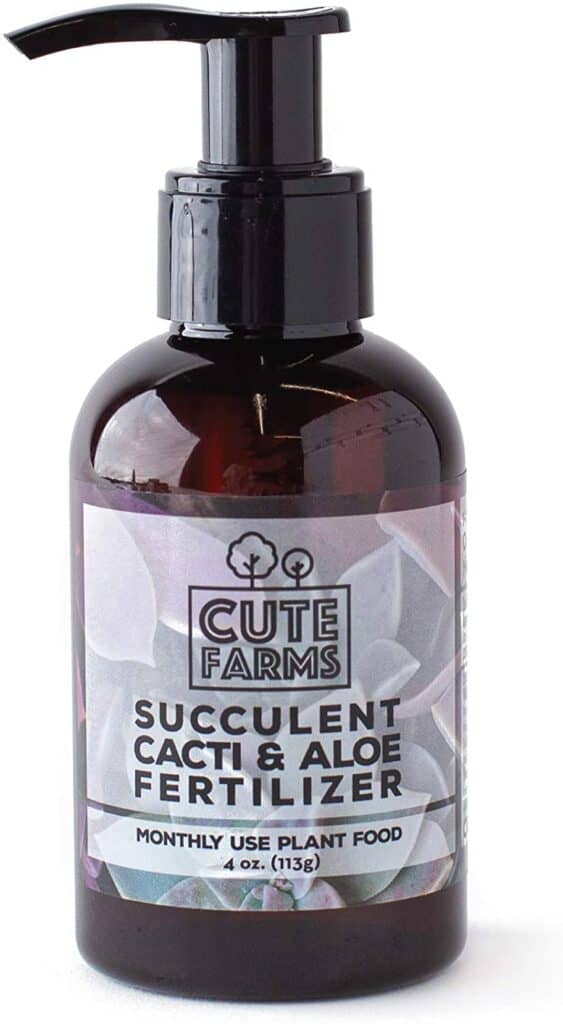
Pincushion Peperomia will not need to be fertilized very much or very often. Give these plants a half dose of fertilizer during spring and summer. These feedings should be given every 2 to 4 weeks during this time frame.
Try Cute Farms Succulent Cacti & Aloe Fertilizer for this plant.
Best Pincushion Peperomia Companion Plantings
Plant clustering is a great way to provide your tropical plants with some aesthetically pleasing companions and some extra humidity . Share health and humidity with these three companion plant options:
Ruby Cascade Peperomia
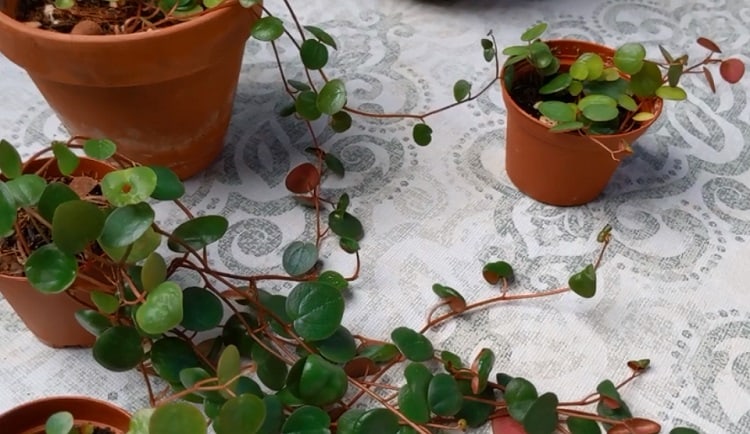
The beautiful thing about selecting another family member as a plant companion is that they will look great next to one another, and they will require a similar environment and similar care.
Pros
- Peperomia Ruby Cascade is very easygoing
- Peperomia Ruby Cascade has care requirements that are similar to Pincushion Peperomia
- Peperomia Ruby Cascade is a vine plant that will provide aesthetic appeal to your garden
- Peperomia Ruby Cascade is not toxic
Cons
- Peperomia Ruby Cascade is not cold hardy
Any Type of Pothos Variety
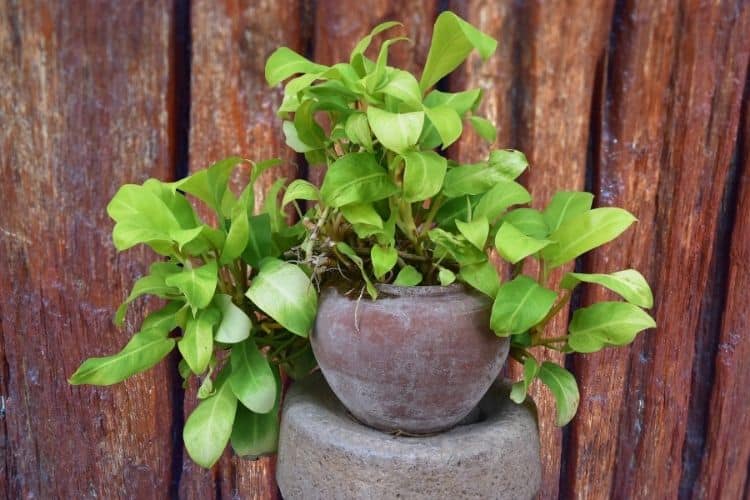
Just imagine looking at a shelf or a windowsill full of beautiful vining Pothos plants . It will transport you to the South Pacific islands in time. Give these easy-going plants some space in your home and they will reward you with beauty, cleaner air , and a chance to grow your gardening skill without stress.
Pros
- Pothos all have the same care requirements
- Pothos plants are very unfussy
- Pothos will provide each other with extra humidity
Cons
- Most Pothos varieties are toxic
Pilea Glauca
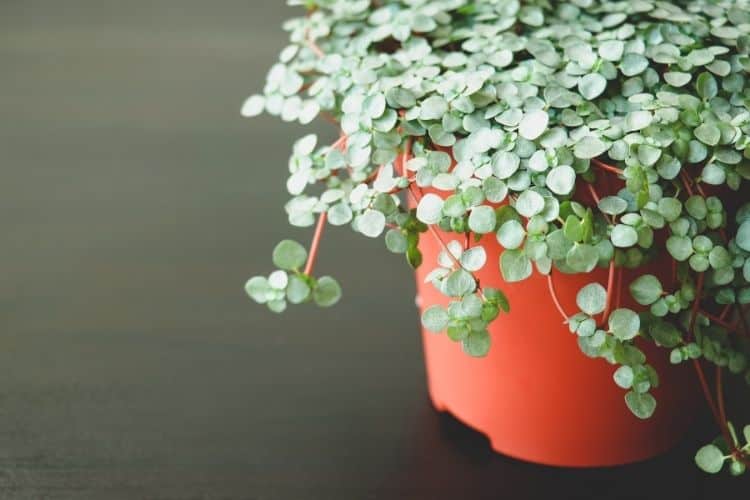
This is a cute and easygoing vine plant that will look beautiful next to your Pincushion Peperomia. It has a lot in common with Peperomia plants, making gardening them alongside each other a breeze.
Pros
- Pilea Glauca can reproduce itself through pups
- Pilea Glauca requires the same temperatures and humidity levels that Pincushion Peperomia does
- Pilea Glauca is not toxic
- Pilea Glauca can purify indoor air
Cons
- Pilea Glauca is not cold hardy
- Pilea Glauca is susceptible to aphids, mealybugs, and spider mites
Pincushion Peperomia Diseases and Common Problems
Here is a list of the most common issues faced by these plants. In this list is information on how to identify and treat each issue.
Mealybugs
Evidence of an infestation of mealybugs is small white spots that look like cotton on leaves and stems. To deal with an infestation of mealybugs, follow these steps:
- Spray a solution of alcohol and water on the leaves
- Rub the leaves with a cotton ball
- Coat the leaves in neem oil or insecticidal soap every few days
Root Rot
This is caused by overwatering a plant. If you learn how to water your plants properly, they should not get root rot. If, however, you are suspicious that your plant is suffering from this, look for these symptoms:
- Stems and leaves that are black
- Stems and leaves that are translucent
- Stems and leaves that are mushy
- Leaves that are dropping off regularly
A plant that is suffering from root rot should be allowed to dry out for a few days or weeks. There’s no need to water the plant during this time. From the trim off leaves and stems that are black, translucent, and mushy. If drying out the plant does not work, it may be best to replace the plant’s soil altogether.
Spider Mites
Evidence of a spider mite infestation will show up as webbing on the leaves and stems. Sometimes the tiny insects will even be visible crawling around the plant. To treat this type of infestation, fill a spray bottle with a quart of warm water, 1 tsp. of dish soap, and 2 tsp. Of neem oil. Use this mixture to spray and wipe the leaves and stems of the plant clean. It may be necessary to repeat this process several times to rid the plant of all the insects.
Pincushion Peperomia Treatments and Maintenance
If you want healthy plants, learn what their care requirements are and learn a few maintenance techniques to keep them in optimal health. Remember, prevention is better than treatment. Here are a few tips to help keep any of your plants healthy and disease-free:
- Check it for signs of disease and infestations regularly, and treat them quickly.
- Clean the plant regularly with neem oil.
- Learn how to properly water and feed your plant.
- Make sure your plant is set in an area with adequate amounts of sunlight, heat, and humidity.
- Mix diatomaceous earth into the soil of potted plants.
Where to Buy Pincushion Peperomia Seeds Online
Before you purchase seeds online, confirm that the seller is reputable and is selling a correctly labeled product. If you would like to purchase seeds to grow your own Ruby Peperomia, start with these online shops:
Where to Buy Mature Pincushion Peperomia Online
There are many great online shops selling Pincushion Peperomia, but Etsy has one of the best selections. Start your search here.
FAQs
Question: Is Pincushion Peperomia Toxic?
Answer: No, this is not a toxic plant.
Question: Which USDA Hardiness Zone Can Pincushion Peperomia be Planted In?
This plant should only be set in a ground plot in zones 9 to 11. If you live in a zone with a lower number, you will need to transfer this plant indoors during the winter.
Question: How Large Can Pincushion Peperomia Grow?
Answer: This is a compact plant that will only grow up to 12 inches tall.
In Conclusion
Pincushion Peperomia may be short and compact, but it supersedes other plants with its unique-looking stems and leaves and its easygoing care requirements. Whether you are a professional gardener or just beginning to test your green thumb, you will thoroughly love growing one of these plants.

